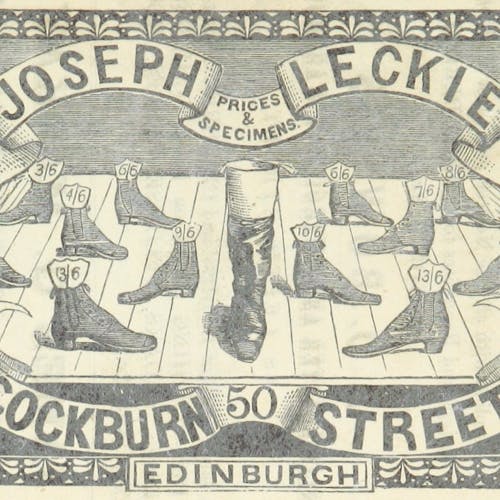What Does the Silicon Valley Bank Collapse Mean for Me?
- PotpourriSilicon Valley Bank (SVB) collapsed on March 10, 2023.

It was the second-largest bank failure the US has ever seen, although two other banks also collapsed in March of 2023. The SVB failure got a lot of press, including some very dark predictions of the imminent implosion of our entire financial system. I don’t know about that, but it might be worth going through what happened and the possible implications for all of us.
So, what in the wide, wide, world of sports happened here? How did such a large, seemingly successful bank fail? This isn’t the 1920s, after all. Oddly, it failed for the reason many banks failed during the US Great Depression in the 1920s. This was an old-fashioned bank run, just like the one Jimmy Stewart ran into in It’s a Wonderful Life. SVB’s depositors started taking their cash out of the bank, then more and more took their cash out, and so on until SVB didn’t have enough cash to cover the withdrawals.
Let’s back up a little. SVB’s customers were mostly tech startups funded by venture capital firms. These startups tended to have a lot of cash on hand from their VC supporters, but not a lot of debt, which meant SVB wasn’t making much money on loans, like many banks do. They made their money by investing their customers’ cash in mortgage-backed securities and US Treasury Bonds.
What happens to the prices of mortgage-backed securities and US Treasury Bonds when interest rates go up? They fall. I can earn a lot more interest on mortgages and bonds when rates are higher, so I’m going to buy new bonds instead of the old, low-interest mortgages and bonds. So, when SVB sold their older, mortgage-backed securities and bonds as interest rates were rising, they didn’t recoup enough cash to cover their customers’ withdrawals.
But there’s more. SVB’s customers had a LOT of cash. Most of their depositors held way more than the $250k in cash which would be covered by the Federal Deposit Insurance Corporation (FDIC). As you probably know, the FDIC provides a kind of insurance for bank customers and will pay them back up to $250k if a bank fails. SVB’s customers knew this, of course, and thought, “Egad, Lucille, I’m not insured for most of my cash, and neither is anyone else who works with this bank! I’d better get out while I still can, because the FDIC isn’t riding in on its white horse to save me.”
And that’s what SVB's customers did. At the first sniff of weakness, they panicked. So many of them left that the bank couldn’t cover their withdrawals, even by selling off their mortgage-backed securities and bonds. Since then, the US Treasury, the Federal Reserve, and the FDIC have ridden in on their white horses to announce that ALL of SVB’s customers will get their uninsured deposits back, not just the insured deposits. Unfortunately, SVB’s customers didn’t know that was a possibility, so they caused a run on the bank.
The US government didn’t want SVB’s collapse to spread across the entire tech sector, because if a lot of those firms lost their cash in widespread bank failures, they might not be able to meet their obligations and the whole industry might take a nosedive, resulting in layoffs, defaults, cats and dogs living together, and mass hysteria. For this reason, the government decided to make all of SVB’s customers whole, even for the uninsured portion of their deposits. Note that this will be funded by the Deposit Insurance Fund, which is in turn funded by fees on financial institutions and the interest on government-issued bonds. It’s not coming from taxpayers.
What does SVB’s failure mean for the rest of us? Well, for folks who own businesses or work in the tech sector, our jobs may have just been saved. A broader crisis may have been averted, although experts disagree about that. Our government certainly has a stake in demonstrating that our banking system is strong, and now it seems FDIC coverage can extend in an almost unlimited way, depending on the situation. But would we bet our uninsured money on it?
This might be a good time to review how we can protect ourselves and avoid having to rely on the government to step in during a banking crisis. The good news is that most of us are banking with institutions which serve a broader set of customers than just tech startups. If you DO have cash in any bank with a narrow focus, you might want to rethink that if your deposits are more than $250k.
Most of us don’t have $250k lying around in cash, anyway. If your cash deposits are under the $250k limit, they are protected by FDIC insurance. What exactly is covered, and how? FDIC insurance covers your cash (not securities) in checking, savings, and money market accounts, as well as CDs, retirement accounts like IRAs, some revocable and irrevocable trusts, and a few other less-common account types. You can find all the glorious detail here.
That’s $250k of coverage per depositor, per institution, and per ownership category. Let’s take a look at what each of those terms means and review some suggestions for people who do have more than $250k in cash:
1. Per depositor, per institution: The FDIC insures the accounts one person (the depositor) holds in one institution. First of all, the institution in question has to be a bank or credit union insured by the FDIC. Yes, credit unions are covered just like banks, but it’s worth double-checking that your institution is part of the FDIC program. If not, you might want to switch. If you’re coming up on the limit with one institution, you might open an account with another FDIC-insured bank or credit union because the $250k limit only applies to one institution at a time. Just note that different branches of the same institution don’t count as different institutions for the purposes of FDIC insurance.
Remember what I said about IRAs up above? FDIC coverage only extends to covered institutions, so typically banks and credit unions. If your IRA is at a brokerage firm, you are not covered by FDIC insurance if your brokerage firm goes under. The good news is that the Securities Investor Protection Corporation (SIPC) provides coverage for up to $500k in cash and securities in case of a brokerage failure, and $250k of that can be cash. But remember…you only get your money back if your institution fails, not if your investments go down in value! There is no insurance against your investments decreasing in value, which is why we invest our money in a broad range of investment types, sectors, companies, and countries.
2. Per ownership category: This refers to the owner of the account in question. My checking account, my husband’s checking account, and our joint checking account all count as separate kinds of ownership, so each of them would be covered by up to $250k in FDIC insurance at one institution. If you’re coming up on the $250k limit, you might transfer money between existing accounts or open a new account with a type of ownership you don’t already have at that institution (like joint or individual). You could also open an account at a different bank or credit union, as I mentioned above.
I hope this blog has given you a better idea of what happened to SVB, the implications for regular people, and what you can do to protect yourself. I guess jolts like this come around every so often to give us an opportunity to evaluate what we’re doing and change it up if we need to. Let’s look at it like that, shall we?



